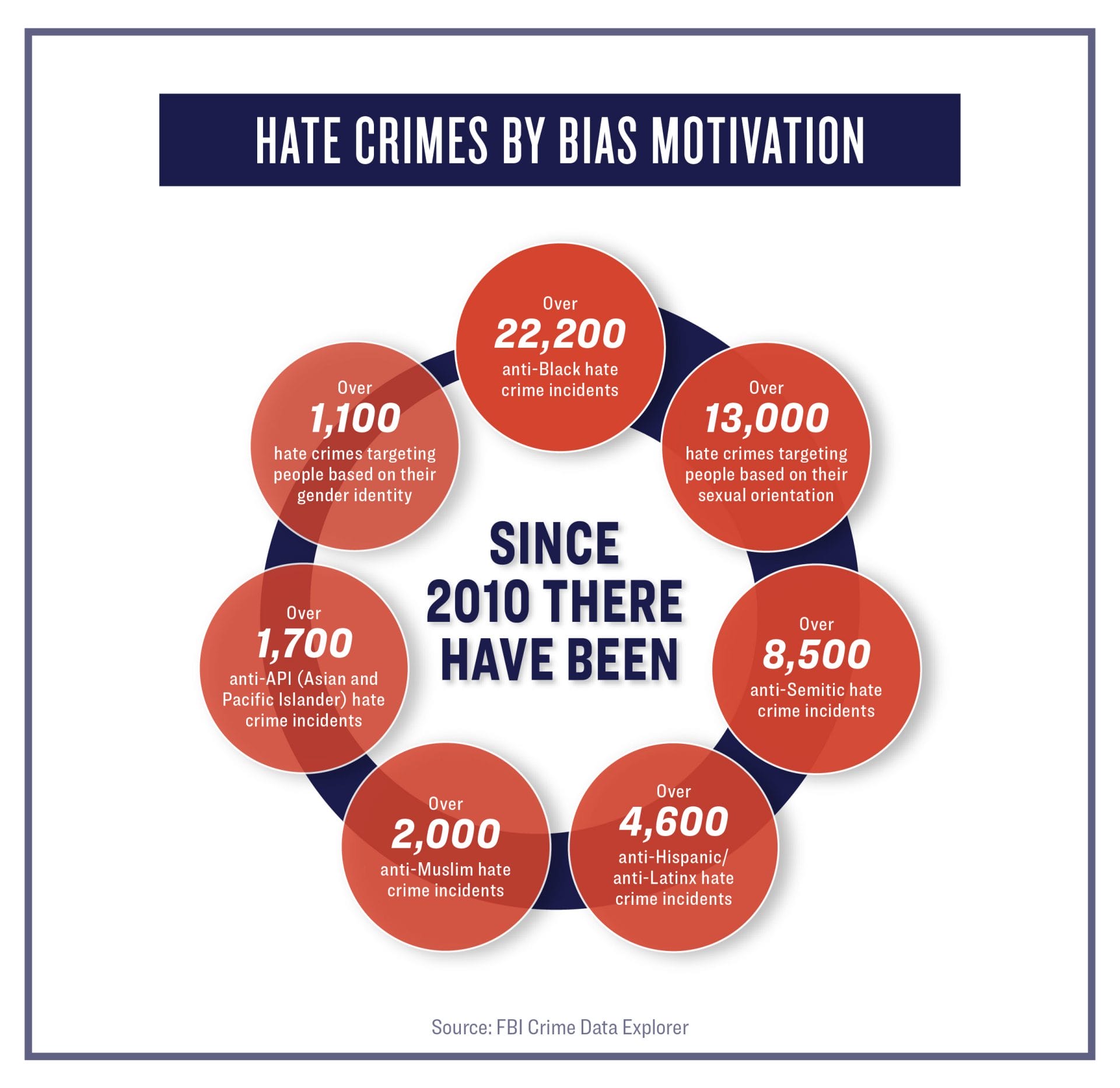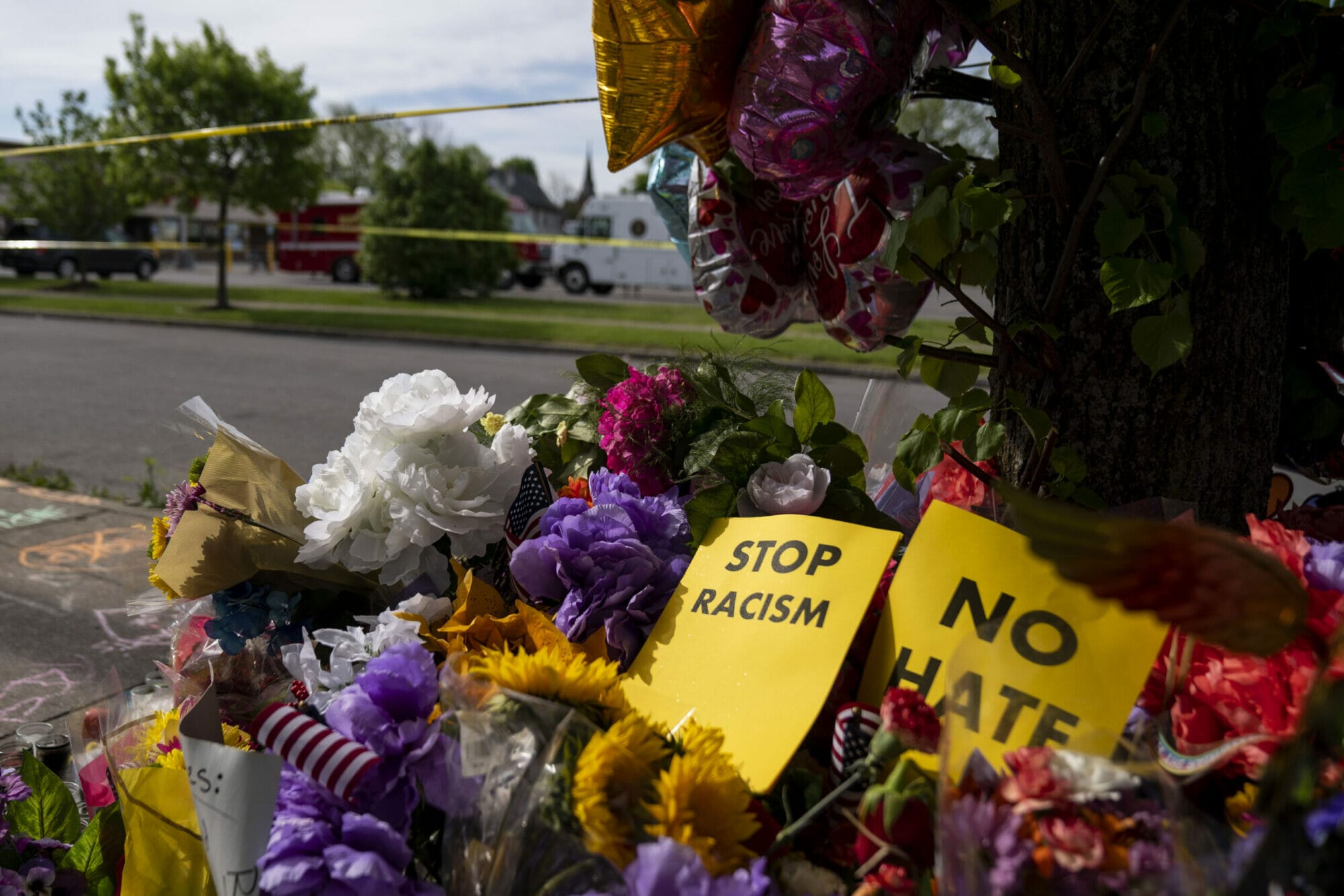
It’s Time to Put an End to Hate-Motivated Violence
On May 5, 2023, a suspected neo-Nazi sympathizer killed eight people and injured six more at an outlet mall in Allen, Texas.
The shooter wore a patch on his chest bearing the acronym “RWDS,” which is used by online hate groups as shorthand for “right wing death squad.”
This horrific tragedy comes nearly a year to the day of the hate-motivated mass shooting in Buffalo, New York, in which a white supremacist murdered 10 Black individuals and injured three more at a grocery store. It’s also just a few weeks away from the one year anniversary of the mass shooting in Uvalde, Texas, in which 19 children and two adults were murdered.
Despite Senator Ted Cruz and Governor Greg Abbott’s refusal to entertain commonsense, evidence-based gun safety proposals, the truth is that our laws make it too easy for people motivated by hate to get their hands on guns. As we approach the one-year anniversary of the Buffalo shooting, let’s take a look at the reality of hate-motivated gun violence in the US and how gun violence prevention laws could help.
MEDIA REQUESTS
Our experts can speak to the full spectrum of gun violence prevention issues. Have a question? Email us at media@giffords.org.
Contact
Hate crimes are on the rise in the United States, and so are hate crimes committed with firearms. Data from the National Crime Victimization Survey suggests that someone is victimized by a hate crime as often as every minute and 43 seconds in this country. And every year, 10,300 people are the victims of hate crimes involving firearms.
The Buffalo shooter, who had published writings about “critical race theory,” drove multiple hours to target a predominantly Black neighborhood with guns he had obtained legally and modified into illegal assault weapons.
White supremacy is increasingly driving acts of domestic terrorism, so much so that the FBI elevated “racially motivated violent extremism” to a top level priority threat. Black Americans not only face a disproportionate amount of hate crimes—with more than 22,000 anti-Black hate crime incidents since 2010—but disproportionate rates of other types of gun violence as well.
For more than 50 years, homicide has been the leading cause of death for Black men ages 15 to 44. While firearm suicide has historically predominantly affected white Americans, from 2018 to 2021, gun suicide rates increased just four percent for white people but 44% for Black people. And more than one in four fatal police shootings involves a Black victim, though Black Americans make up just 14% of the US population.

Governor Abbott was quick to blame mental health for the Allen mall shooting, just as he blamed mental health for the Uvalde shooting—despite slashing his state’s mental health budget.
But while other industrialized nations have similar rates of mental illness as the United States, they don’t have similar rates of gun violence. Anyone who hasn’t fallen for the gun lobby’s extremism can see the problem pretty clearly: It’s the guns.
Source
Lynn Langton and Madeline Masucci, “Hate Crime Victimization,” United States Department of Justice, 2017, https://www.bjs.gov/content/pub/pdf/hcv0415.pdf.
People convicted of violent hate crime misdemeanors are still eligible to purchase firearms in 28 states. In a country where hate crimes are on the rise and where guns outnumber people, this is a recipe for disaster. And we’ve seen disaster unfold time and time again.
Our report on how America’s gun laws fuel armed hate, first released in March 2021 and rereleased one year ago, explores the policy solutions that can make a difference in ending this epidemic.
These include:
- Universal background checks toensure that people who aren’t eligible to possess firearms—because of previous hate crime convictions or because they’re subject to a protective order, for example— can’t purchase them
- Military-style weapon and large-capacity magazine regulations that more thoroughly regulate civilian access to deadly weapons designed for maximum casualties, inhibiting a dangerous persons’ capacity to perpetrate the large-scale mass shootings that often target marginalized groups
- Extreme risk protection order laws that allow for the temporary removal of firearms from people found by a court to pose a risk of violence to themselves or others, and can prevent individuals who have displayed threatening behaviors towards protected groups from accessing guns
- Laws that prohibit guns on government property and at civic events such as protests, demonstrations, meetings of legislative bodies, and elections
- “Disarm Hate” laws which prohibit firearm access for people who have been convicted of certain misdemeanor hate crimes, preventing hate crime offenders from perpetrating further attacks
These days, it’s normal to turn on the news and see coverage of yet another mass shooting. But we can’t become numb to these tragedies, and we can’t buy into the gun lobby lie that gun laws won’t help.
Year after year, our Gun Law Scorecard shows that states with stronger gun laws have lower gun death rates. Our legislators owe it to their constituents to take action and change our dangerous status quo.

REPORT
10 YEARS of COURAGE
Since founding Giffords in the wake of the Sandy Hook shooting, we’ve helped pass a remarkable 525 significant gun safety laws in 49 states.
Learn More